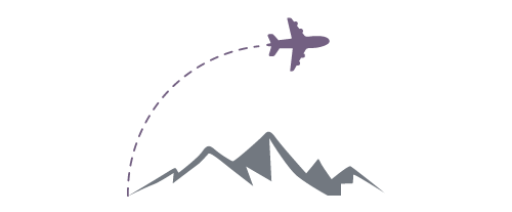The Camino de Santiago - Way of St. James
The Camino de Santiago—also known as the Way of St. James—is a legendary pilgrimage route that has drawn travelers, seekers, and adventure-lovers for over a thousand years. At its core, it's a network of trails leading to the cathedral in Santiago de Compostela, where the remains of the apostle Saint James are said to rest. For first-timers, it might sound like a long hike with historical flair—but for those who’ve walked it (or dreamed about it), the Camino is so much more. It’s a walking meditation, a cultural deep dive, and a chance to unplug and reconnect—whether with fellow pilgrims, local tapas, or your own thoughts. With multiple routes crisscrossing Spain (and beyond), there’s no single “right way” to walk the Camino—just your way. Whether you're chasing a spiritual awakening or just in it for the churros and scenic views, there's a Camino for you.
From coastlines to mountains, here are the many ways to walk the Camino
1. Camino Francés (The French Way)
Start Point: Saint-Jean-Pied-de-Port, France
Distance: Approximately 780 km
This is the most popular and well-supported route, offering plenty of amenities and a strong pilgrim community.
---
2. Camino del Norte (The Northern Way)
Start Point: Irún, Basque Country, Spain
Distance: Approximately 825 km
Follows Spain’s northern coast with scenic views, fewer crowds, and more hills.
---
3. Camino Primitivo (The Original Way)
Start Point: Oviedo
Distance: Approximately 320 km
Known as the oldest route, it offers a rugged and mountainous journey with stunning landscapes.
---
4. Camino Portugués (The Portuguese Way)
Start Points:
From Lisbon: Approximately 610 km
From Porto: Approximately 240 km
This route passes through Portugal and Galicia, and is generally flat and accessible.
---
5. Camino Inglés (The English Way)
Start Points:
From Ferrol: Approximately 120 km
From A Coruña: Approximately 75 km
A shorter route often chosen by those arriving by sea from the British Isles. Only the Ferrol route qualifies for the Compostela on its own.
---
6. Via de la Plata (The Silver Route)
Start Point: Seville
Distance: Approximately 1,000 km
A long, less-traveled route through southern and western Spain, ideal for those seeking solitude.
---
7. Camino de Invierno (The Winter Way)
Start Point: Ponferrada
Distance: Approximately 260 km
An alternative winter route that avoids snowy mountain passes of the Camino Francés.
---
8. Camino de Madrid
Start Point: Madrid
Distance: Approximately 675 km
This lesser-known route joins the Camino Francés near Sahagún.
---
9. Camino Aragonés
Start Point: Somport Pass (on the France–Spain border)
Distance: Approximately 170 km
This route connects with the Camino Francés at Puente la Reina.
---
10. Camino Sanabrés
Start Point: Granja de Moreruela (a junction on the Via de la Plata)
Distance: Approximately 370 km
A quiet and scenic route that provides a western finish to the Via de la Plata.
Packing tips
Packing for the Camino de Santiago is a delicate art—somewhere between being prepared and not hauling your entire life on your back. The golden rule? Keep it light. You’ll want a comfortable, well-fitted backpack (no overstuffed luggage here), lightweight clothing you can layer, and quick-dry fabrics that survive the daily wash-and-hang routine. Don’t forget good walking shoes—break them in beforehand unless you enjoy blisters and regret. Toss in a hat, sunscreen, rain gear, and a reusable water bottle, because Mother Nature likes to keep pilgrims on their toes. Essentials like a sleep sheet, earplugs, and a few first-aid items (hello, blister pads) go a long way in shared albergues. Just remember: if it doesn’t serve more than one purpose or spark deep joy and prevent foot pain, it probably doesn’t need to come with you.
